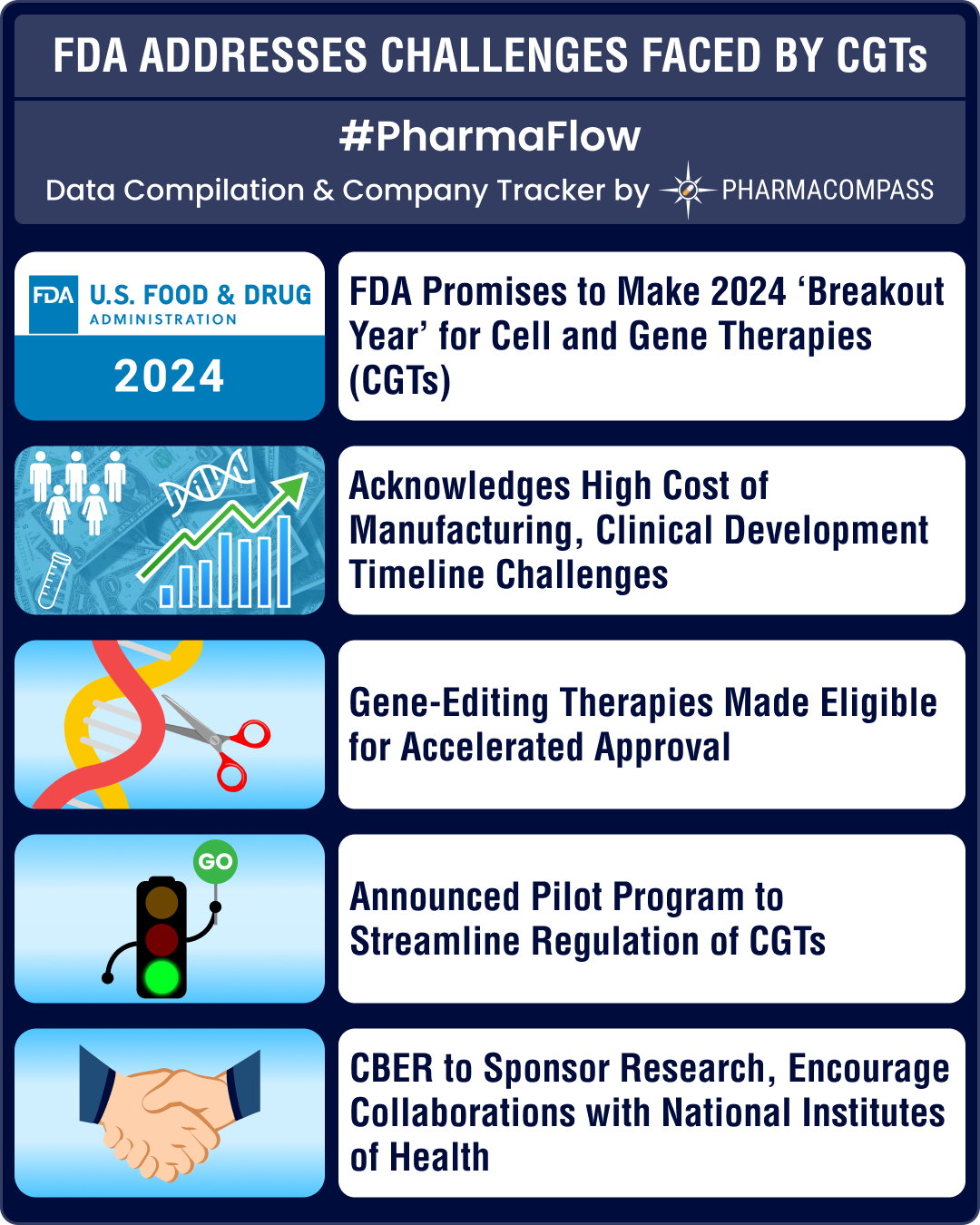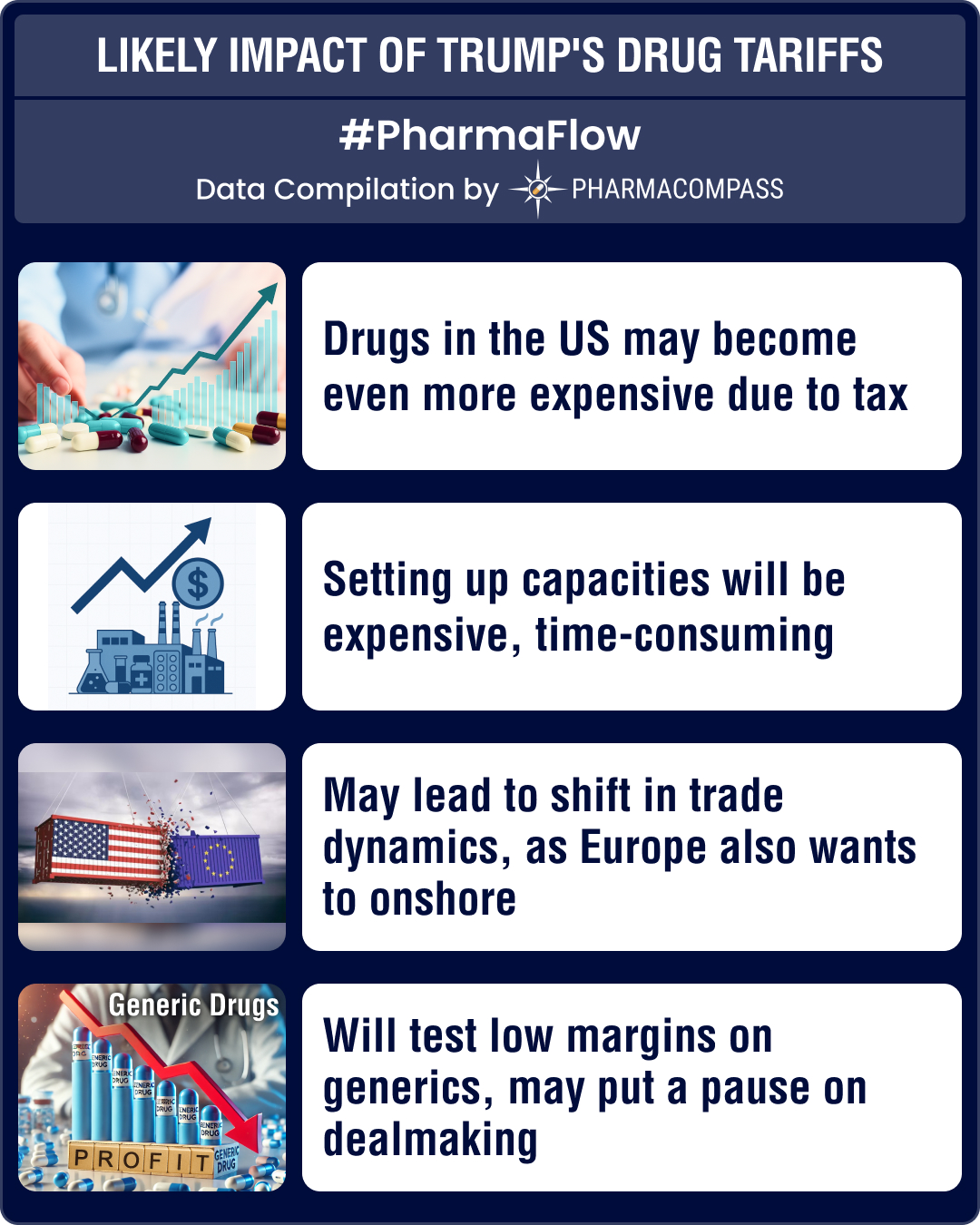
By PharmaCompass
2024-02-22
Impressions: 3173
The year 2023 was a rather tough one for cell and gene therapy (CGT) companies. There was news about smaller CGT players finding it difficult to get finance, with many drastically downsizing their operations by laying off hundreds of employees. Many others had to shut shop, making us wonder if innovation in the biopharma industry is in for a setback.
The new year began on a sour note, with the FDA shooting off letters to six manufacturers of cancer therapies that use CAR-T technology to add a boxed warning on their label after the agency found a serious risk of developing secondary cancer. These therapies include Bristol-Myers Squibb’s Abecma and Breyanzi, Janssen Biotech’s Carvykti, Gilead’s Yescarta, Novartis’ Kymriah and Kite Pharma’s Tecartus. “Boxed warnings” or “black box warnings” are the highest safety warnings. A week later, FDA stepped in and finalized guidance for companies and academic researchers working on CAR-T cell therapies.
In this article, PharmaCompass looks at some of the challenges being faced by CGT firms, and the growth prospects of this sunrise sector.
A field with complex manufacturing, high costs of development
There are several ways in which CGTs can target a disease, giving rise to various kinds of such therapies. These include gene addition, gene silencing, gene editing, DNA therapy (such as DNA plasmids and viral vectors), RNA therapy (ribosomal RNA, messenger RNA, microRNA, small interfering RNA and transfer RNA), antisense oligonucleotides and gene-modified cell therapy (such as CAR T-cell therapies and Treg cell therapies).
CGTs are being deployed to treat several kinds of diseases, such as various types of cancers, including brain tumors, breast and colon cancers, as well as leukemia. Other major therapeutic areas CGTs are making an impact on are genetic and rare diseases like sickle cell disease (SCD), β-thalassemia, hemophilias, and paraplegia. CGTs are also being explored for treating Duchenne muscular dystrophy, Alzheimer's disease, Parkinson’s disease, multiple sclerosis, type 1 diabetes and macular edema.
Going by FDA’s Purple Book, there are 35 CGT products approved in the US. With three FDA approvals, bluebird bio tops the list (with Lyfgenia, Zynteglo, and Skysona), followed by Bristol Myers Squibb (with Abecma and Breyanzi), Kite Pharma (with Tecartus and Yescarta), and Novartis (with Zolgensma and Kymriah). Recently, FDA approved Vertex Pharma-CRISPR Therapeutics’ Casgevy, the first gene-editing therapy that uses the Nobel-prize-winning CRISPR technology.
Though CGTs are personalized therapies, they come with potential risks, such as developing certain kinds of cancers, genotoxicity, allergic reactions, damage to the organs etc.
Another challenge faced by CGTs is costs. Apart from the high R&D costs, these biotechs face other challenges such as high costs of reagents like clinical-grade lentiviral vectors or gene editing reagents, as well as cell processing materials, GMP facilities and personnel costs.
Little wonder then that the selling price of some of the CGTs run into millions of dollars. CSL Behring and uniQure’s Hemgenix, a first-of-its-kind drug for hemophilia B, is the most expensive drug in the world. It costs a whopping US$ 3.5 million. Similarly, bluebird bio’s Lyfgenia, a therapy that has the potential to resolve vaso-occlusive events and is custom-designed to treat the underlying cause of SCD, costs US$ 3.1 million.
Smaller CGT firms get strapped for funds, fail to land Big Pharma deals
Typically, innovation for CGTs happens at small biotechs or universities. Many of the small firms get acquired by bigger drugmakers or tie up with larger pharma companies so that volumes can be scaled up once the therapy is approved.
Last year, scores of biotechs announced bankruptcies. Many smaller biotechs failed to land Big Pharma deals. They had to contend with narrower funding options, forcing several startups in the sector to shut shop. For example, Intergalactic Therapeutics shut down last year, after being around for less than two years. The company said: “The current environment has led to challenging times for companies to raise capital,” even though Intergalactic’s programs have “shown promise”. Other CGT firms that shut shop last year were Locanabio, Vedere Bio II and CODA Biotherapeutics.
Companies that laid off employees to cut costs are base editing biotech Beam Therapeutics, Editas Medicine, Sangamo Therapeutics, Graphite Bio, UniQure, Generation Bio, Candel Therapeutics, Lyell Immunopharma, BrainStorm Cell Therapeutics and Nkarta. CRISPR Therapeutics, ElevateBio and Atsena also reportedly laid off employees.
FDA lines up initiatives, to make 2024 ‘breakout’ year for gene therapies
The “personalized nature” of CGTs makes them highly effective. But this trait also gives rise to multiple challenges. Acknowledging this, in January, FDA announced a pilot program called Collaboration on Gene Therapies Global Pilot (CoGenT Global) to streamline regulations pertaining to this sector. The agency has also addressed challenges such as the high cost of manufacturing, clinical development timelines, macroeconomic conditions (such as high interest rates), and operational issues being faced by CGTs.
FDA is promising to make 2024 a “breakout” year for gene therapies, with a number of initiatives to promote clinical development, approvals and uptake. FDA’s Center for Biologics Evaluation and Research (CBER) is sponsoring research and encouraging collaboration with the National Institutes of Health’s Bespoke Gene Therapy Consortium. The agency has made gene editing therapies eligible for accelerated approval and detailed the information that should be provided in an investigational new drug (IND) application. It has also launched a pilot program Support for clinical Trials Advancing Rare disease Therapeutics (START), with the intention of speeding up development.
Our view
In 2022, Precedence Research estimated the CGT market at US$ 15.46 billion, expecting it to increase fivefold by 2032 to touch US$ 82.24 billion, with therapeutic areas such as oncology (US$ 10.4 billion) and genetic disorders (US$ 8.57 billion) expected to draw most revenues.
FDA approved seven CGTs in 2023, including Casgevy. But this year, FDA and European regulators may approve as many as 17 gene therapies. A McKinsey report says in 2024 alone, “up to 21 cell therapy launches and as many as 31 gene therapy launches—including more than 29 adeno-associated virus (AAV) therapies—are expected.” Given these estimates, we have little doubt that 2024 will be a “breakout year” for CGTs.
The PharmaCompass Newsletter – Sign Up, Stay Ahead
Feedback, help us to improve. Click here
Image Credit : FDA ADDRESSES CHALLENGES FACED BY CGTs by PharmaCompass license under CC BY 2.0
“ The article is based on the information available in public and which the author believes to be true. The author is not disseminating any information, which the author believes or knows, is confidential or in conflict with the privacy of any person. The views expressed or information supplied through this article is mere opinion and observation of the author. The author does not intend to defame, insult or, cause loss or damage to anyone, in any manner, through this article.”








